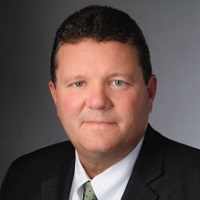 By Charles Palmer, Chief Information Officer, Cerner ITWorks Client Director
By Charles Palmer, Chief Information Officer, Cerner ITWorks Client Director
Twitter: @Cerner
Twitter: @ChooseNHS
Twitter: @CommonWell
Nanticoke Health Services is working with Cerner ITWorks to tackle some biggest challenges of growing a national network for data exchange in one of the smallest states, Delaware. In this blog, Charles Palmer, the chief information officer and ITWorks client director for Nanticoke Health Services, talks about how his 100-bed organization has become one of the leading users of the CommonWell Health Alliance within the Cerner client base.
When Cerner Chairman and CEO Neal Patterson challenged health care providers to help advance interoperability by joining CommonWell during his keynote speech at Cerner Health Conference 2014, Nanticoke took it to heart and pursued early implementation and adoption of the data exchange service.
First, at the most senior levels of leadership, we embraced the vision that the future of health care depended on our involvement in the CommonWell model.
Like many health systems, Nanticoke relied on its state or regional health information exchange (HIE) to achieve a degree of interoperability. In Delaware, we have a mature HIE, which covers 2 million people in the state with connections to established HIEs in Maryland and the District of Columbia. Yet, we could readily envision how CommonWell would be important in removing geographical limitations and improving communication with affiliated physician practices.
As a result, Nanticoke was among the first to sign a contract for CommonWell services and send patient demographic data to the cloud. Since then, we have been working on the most efficient intake and discharge workflows to gain the most value for our provider and patient communities. We’ve fine tuned opt-in versus opt-out patient consent, enrollment and linking, and we’re currently working on the consumption of discrete external health data versus simply viewing it.
Access to past encounters
Beebe Healthcare, about 45 minutes away, has been a strong partner in the CommonWell implementation. Beebe uses Cerner PowerChart in its acute facility and another vendor in its ambulatory facilities. There are patients who have visited Beebe outpatient clinics, and perhaps they’ve been seen at Beebe Medical Center too, and then they show up in the emergency department (ED) at Nanticoke.
With CommonWell, we now have knowledge of and access to all past patient encounters. These types of situations showcase the importance of having patient data available when its needed, regardless of the EHR vendor used at any point.
If you build it, they will come
Currently we are in a pilot phase, using case managers to enroll patients who are frequently treated at Nanticoke. As with any type of change, we need to continually communicate the vision and value of the pilot and work hard to help the case managers understand the value of their efforts.
For example, when they want to link their patient to prior health care encounters, but there’s nothing to link to, it’s tough for them to see the importance of what they’re doing. But, when they do successfully link a patient with their prior health care information, case managers who access this information for the first time and can view this prior visit begin to grasp the power of the CommonWell network.
Impacting care coordination
“As the CommonWell network continues to mature, it has the potential to greatly impact the way I coordinate the care that my patients receive,” said Charlie Brown, one of our case managers. “As additional providers contribute health data, I’ll have a much better understanding of what’s occurred with my patient over a period of time before they are even admitted to our facility. If they’ve seen their primary care provider or a specialist in the weeks and months prior to their hospitalization, CommonWell can give me a clearer picture of their journey, and an opportunity to engage with them more effectively.”
What’s next?
Beyond the case manager pilot, Nanticoke is aggressively planning for every patient to be auto enrolled in CommonWell. This will continue our aggressive goal to be the leader in the organizational use of CommonWell. We want to be one of the first data senders enrolling all of our patients in CommonWell.
The next step is to expand our pilot to our ED. Currently, when a patient presents to the ED, it’s possible to see basic lab and radiology records from the Delaware HIE. However, when we add CommonWell capabilities and as CommonWell increases its reach and number of enrolled patients, clinicians will be able to access outside record views in PowerChart and FirstNet, no matter where the patient has previously been. With this data, they can make a much more accurate, informed diagnosis based on past history.
Over the past 18 months, we’ve overcome many of the issues that some skeptics believe are barriers to a successful CommonWell implementation. We are very excited about being a leader in implementing the CommonWell Health Alliance, the potential of CommonWell, and we believe we are on the cusp of something great.
This article was originally published on the Cerner Blog and is republished here with permission.
